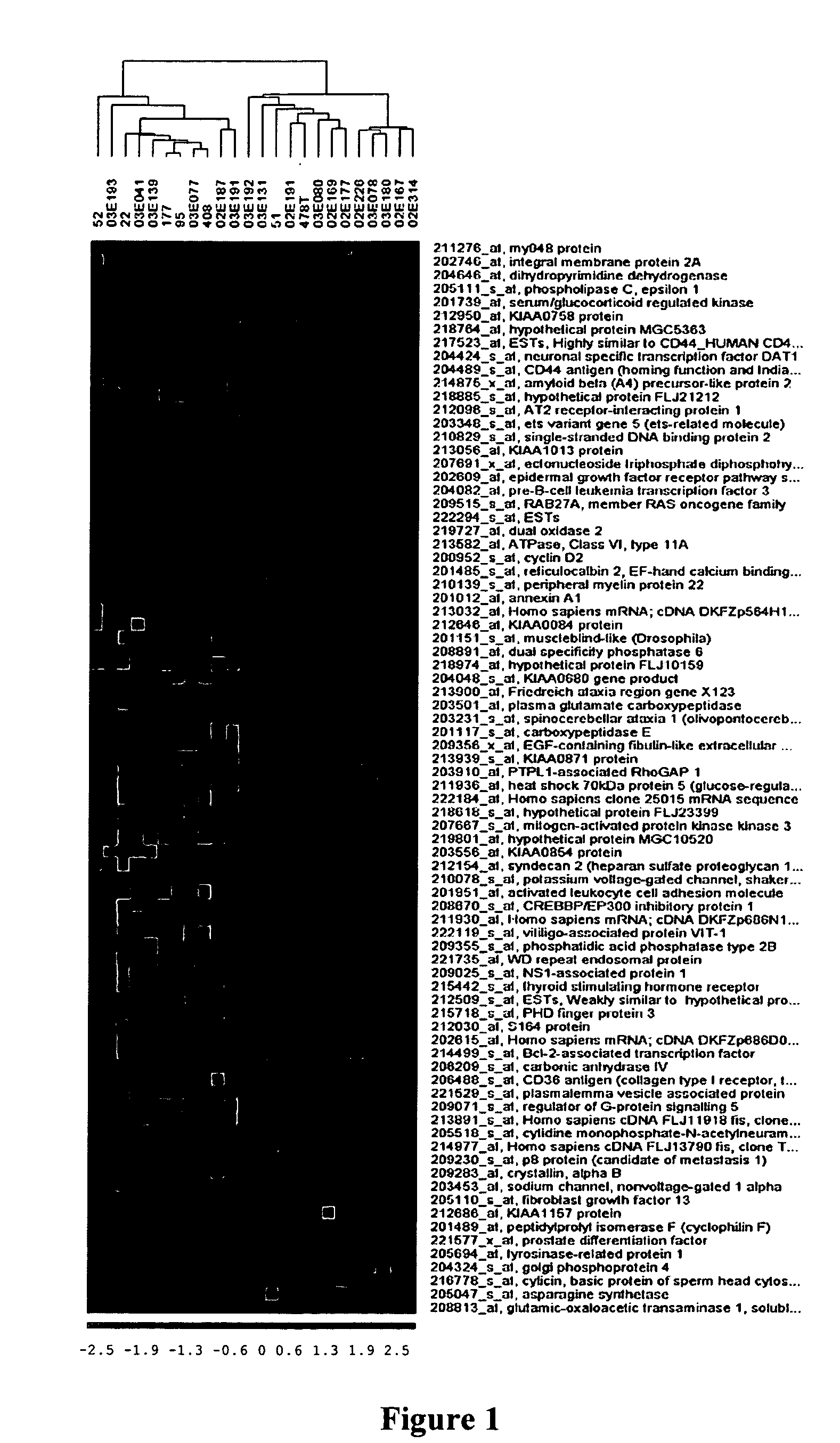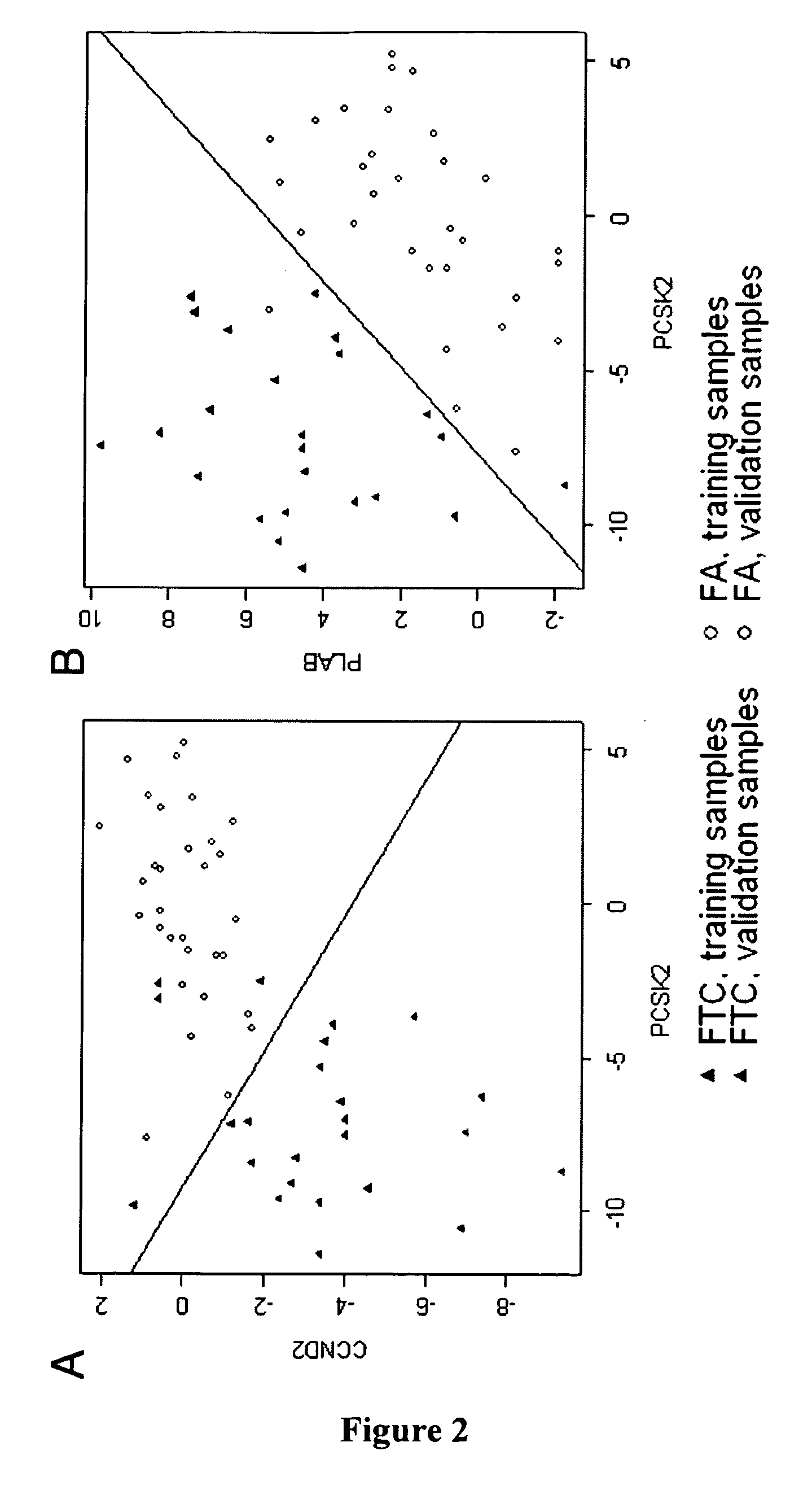Methods for differentiating malignant from benign thyroid tissue
a thyroid nodule and thyroid tissue technology, applied in the field of tests, can solve the problems of inconclusive or suspicious results, differentiation between benign and benign, especially follicular, etc., and achieve the effect of increasing the expression of plab, reducing the expression of ccnd2, and reducing the expression of pcsk2
- Summary
- Abstract
- Description
- Claims
- Application Information
AI Technical Summary
Benefits of technology
Problems solved by technology
Method used
Image
Examples
examples
[0067]Materials and Methods
[0068]Tissue Specimens
[0069]In total, 55 samples (24 FTC and 31 benign thyroid samples) were independently acquired for gene expression analysis in our training and validation set mentioned below. All tissue specimens were snap frozen in liquid nitrogen after surgical removal and stored at −80° C. Final histological classification for these samples was obtained from paraffin-embedded tissue. In addition, sections from each snap-frozen tumor sample were independently subjected to hematoxylin and eosin stain and evaluated by a pathologist. A panel (training set) of 12 FTCs and 12 FAs were accrued for microarray (GeneChip) analysis (Table 1).
TABLE 1Histopathological classification of 12 FTC samples used for microarrayanalysisSample IDSex / agePathologic diagnosisTNM02E187n / aFTC-Hurthle cell type; capsular InvasionpT203E139F / 61FTC-Hurthle cell type; widely InvasivepT203E077F / 48FTC-Hurthle cell type; minimal InvasivepT203E193F / 82FTC-Hurthle cell type; minimal Inv...
PUM
| Property | Measurement | Unit |
|---|---|---|
| Fraction | aaaaa | aaaaa |
| Fraction | aaaaa | aaaaa |
| Fraction | aaaaa | aaaaa |
Abstract
Description
Claims
Application Information
 Login to View More
Login to View More - R&D
- Intellectual Property
- Life Sciences
- Materials
- Tech Scout
- Unparalleled Data Quality
- Higher Quality Content
- 60% Fewer Hallucinations
Browse by: Latest US Patents, China's latest patents, Technical Efficacy Thesaurus, Application Domain, Technology Topic, Popular Technical Reports.
© 2025 PatSnap. All rights reserved.Legal|Privacy policy|Modern Slavery Act Transparency Statement|Sitemap|About US| Contact US: help@patsnap.com



